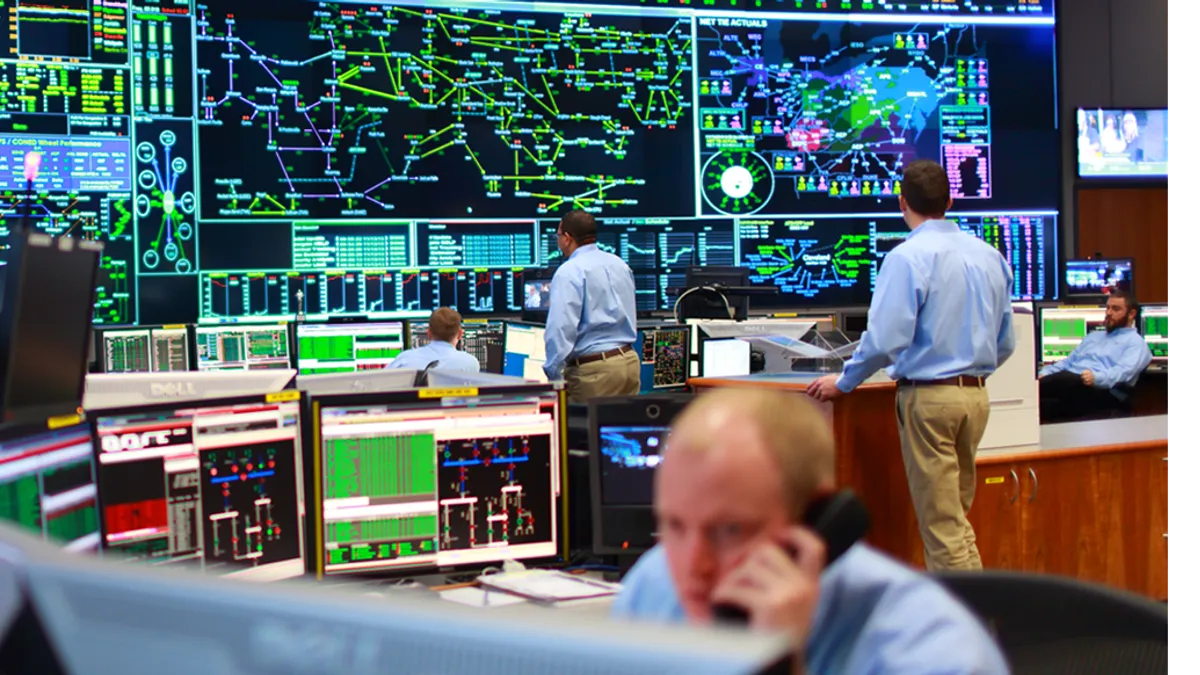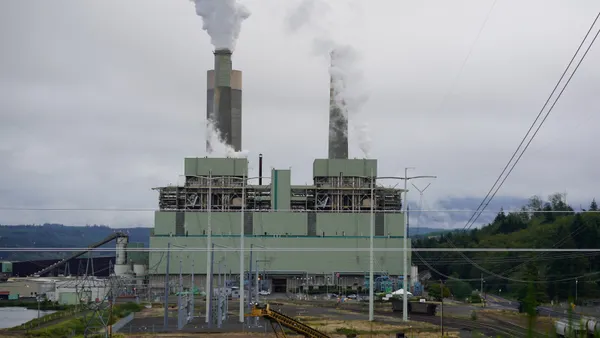Dive Brief:
-
Five wholesale electric power market executives agreed that natural gas will continue to play an essential role on the electric power grid, though some caution against an overemphasis on blackstart capabilities amid efforts for higher renewable energy penetrations.
-
"We have some very, very plentiful hydro assets, some good performing nuclear assets, but very frequently, natural gas is what's on the margin and what is the balancing resource for most of the renewables that have been added over the system," Richard Dewey, president and CEO of the New York Independent System Operator (NYISO), said Tuesday during the National Association of Regulatory Utility Commissioners' (NARUC) Summer Policy Summit.
- But despite the grid operators' unanimous consensus on the resource's short-term benefits, PJM Interconnection President and CEO Manu Asthana warned against prescribing too many issues to renewables so early in the game. "If we get to 100%, we're gonna have to solve some of these really, really challenging problems, but I think that compared to where we are today, we shouldn't let the great be the enemy of the good," he said.
Dive Insight:
For many regions of the U.S., the electric power grid has undergone a rapid transition from majority coal-fired power to majority natural gas. Meanwhile, states across the U.S. have begun to set increasingly ambitious clean energy goals for their power systems, sometimes coming into conflict with grid operator policies they see as a hindrance to bringing on high levels of renewable energy at once.
And unlike the California and New York ISOs, some grid operators have more than one legislature to keep in mind, noted Asthana.
Though policy directives in those states are "clear," they're not necessarily easy, he said. But for a grid operator like PJM that includes states with ambitious clean energy goals such as Maryland, New Jersey and Illinois, as well as states like West Virginia and Pennsylvania that have historically benefited from coal and natural gas, respectively.
"We're not trying to … favor particular fuel, but the policy discussions that we're seeing are significantly trending in the direction of decarbonization ... and so it's interesting to think about what is the art of the possible?" Asthana said. For PJM, even with more piecemeal policy directives, ultimately it's been the coal-to-gas transition that has led to significant emissions reductions within its market.
"So imagine what is going to happen with increased renewable penetration over time," he said. "I think gas will continue to be an important part of the mix, particularly in the near term, because the dispatchable generation is essential to ensure reliability. But in the longer term, you know, a lot of it depends on the penetration of renewables and the penetration of batteries."
California, for its part, is moving from the fuel much more rapidly, said Mark Rothleder, vice president of market policy and performance for the California ISO. Almost 40% of the state's power came from non-hydroelectric renewables in April of this year, according to the U.S. Energy Information Administration.
By 2045, California expects less than 5% of energy production to come from gas, likely from some form of renewable gas or hydrogen gas. But in the short term, the fuel will continue to play an essential role, Rothleder said. And the key to higher renewable energy penetration will be to think about how those resources can provide the same benefits, namely, local reliability in constrained areas with limited transmission, a source for evening peaks, resiliency for multi-day weather events, and voltage support, frequency response capability and other reliability services.
"As we transition away from gasoline, we have ... to think about what that fleet is providing in terms of services. And we need to start looking at how those renewable resources provide some of those essential reliability services," he said.
But some of those considerations, in particular blackstart capabilities, should not prevent regulators from allowing higher penetrations of renewable energy, said Asthana.
"It's possible to place almost too much emphasis" on the question of how utilities will handle that at higher levels of renewable energy, he said.
"The difference between 100% decarbonization and 90% decarbonization is actually not that big a difference in terms of carbon. But in terms of the ability to solve a lot of these other issues. I think it's a huge difference," he said. "There's so much room for decarbonization from here."















